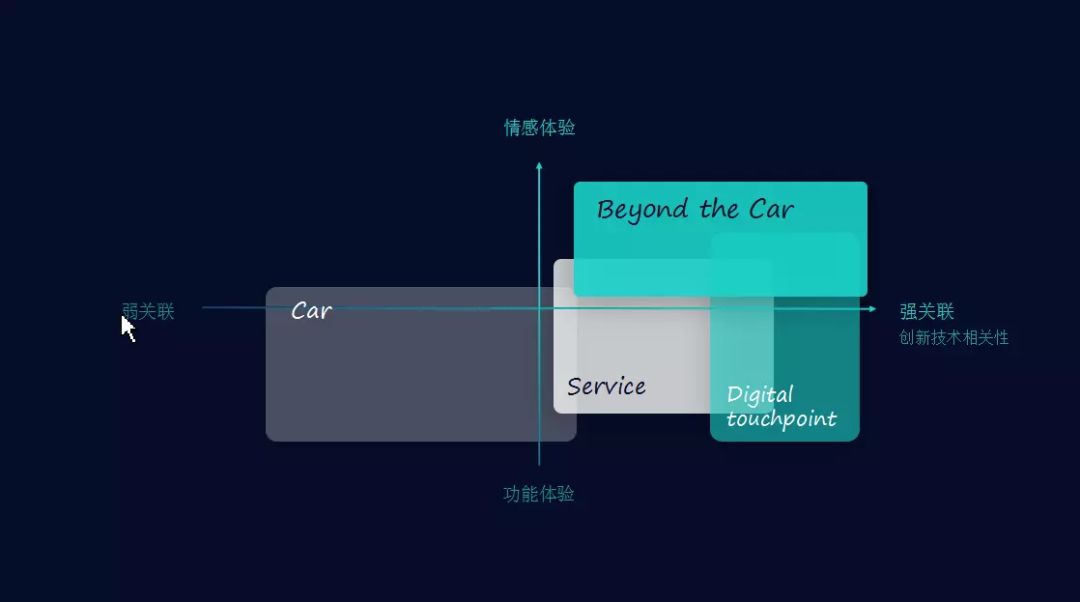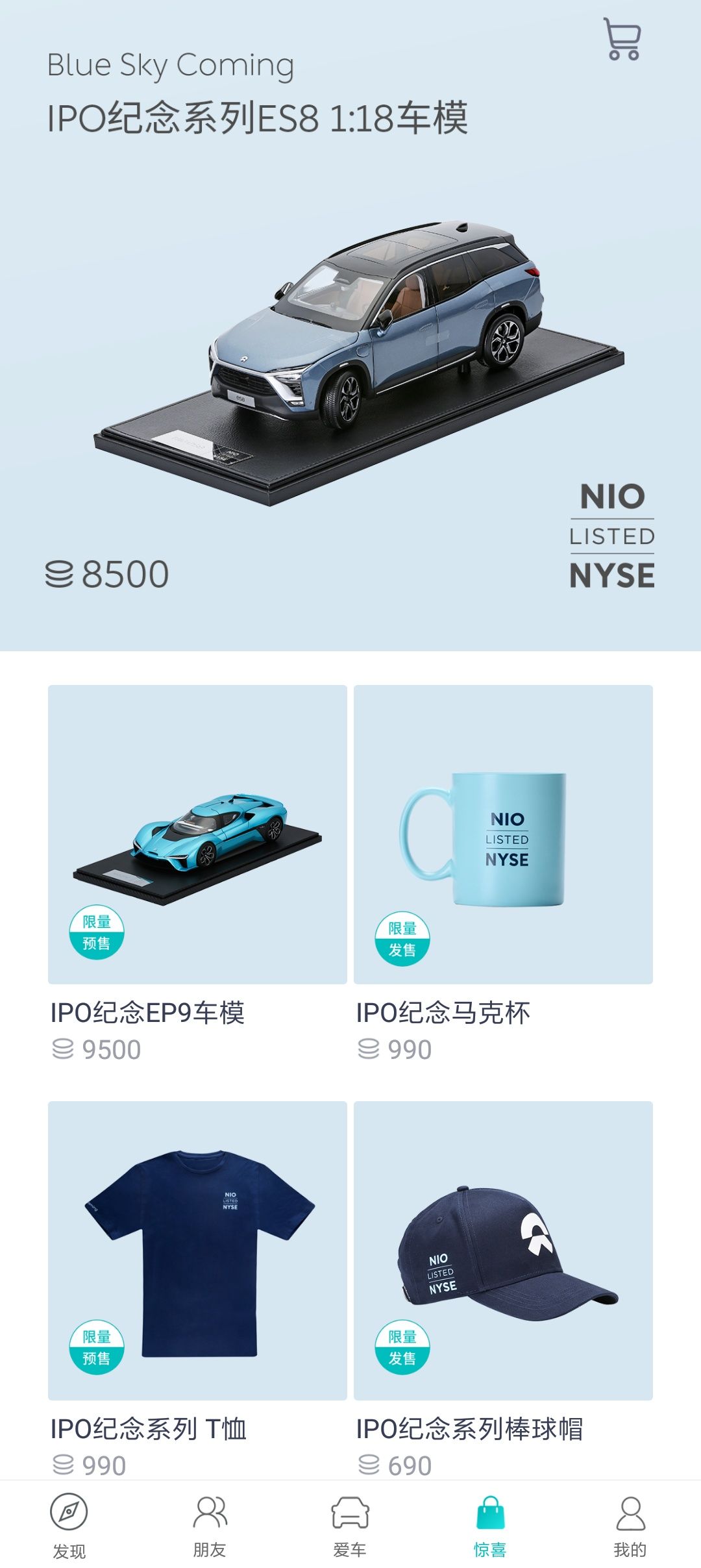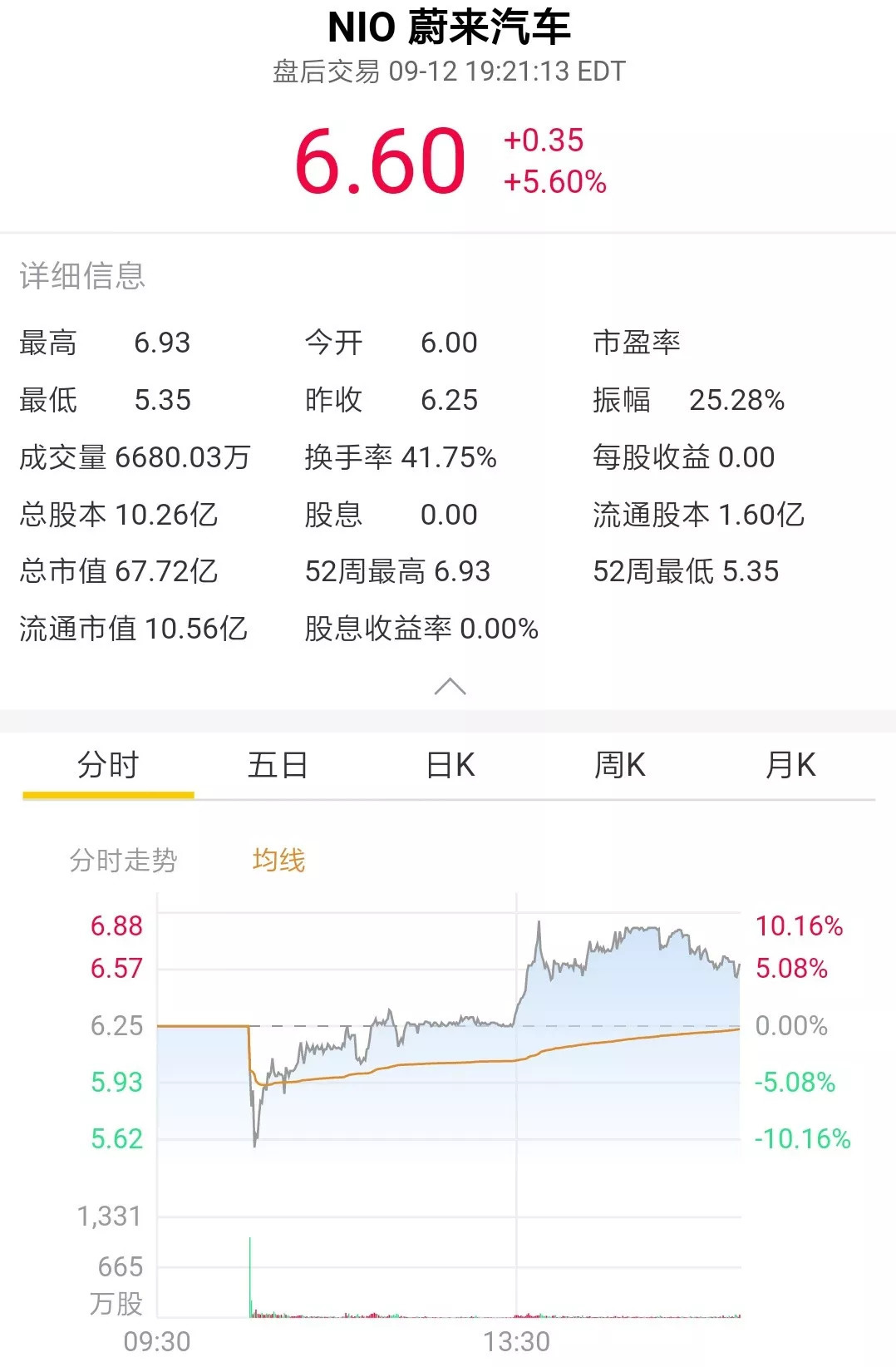NIO, with the stock code of “NIO”, a Chinese electric vehicle manufacturer, was listed on the New York Stock Exchange. However, its shares opened lower than expected, dropping more than 13% at one point during the day and ultimately closing at $6.60, with a market value of $6.77 billion.
The 12 people who rang the bell at the listing ceremony were all NIO users, rather than executives. This is considered a significant milestone for NIO and China’s intelligent electric vehicle industry. For NIO, however, this is just the beginning of a large-scale industry experiment revolving around user experience.
Since its establishment in November 2014, Li Bin, the founder, has undoubtedly had a difficult and stressful 45 months of entrepreneurship. Although he may not agree with the characterization of NIO as a “large-scale industry experiment”, I believe that this is exactly what NIO is doing – an experiment that comes at a high cost.
NIO’s User-Oriented Experiment
Jack Ma said that people’s attitudes towards new things go through four stages: not seeing it, looking down on it, not understanding it, and not having time for it. As the leading company in the new car manufacturing camp, NIO is not well understood by the mainstream media.
Many influential foreign media outlets such as Reuters, Bloomberg, and CNBC often compare NIO to Tesla, even going so far as to call it the “Chinese version of Tesla”. However, this comparison is not entirely accurate. Tesla and NIO are pursuing vastly different approaches.
“To create a pleasant lifestyle by building high-quality intelligent electric cars and becoming the best user-oriented enterprise.”
This is not my statement, but rather NIO’s mission statement that is written in its prospectus. Alibaba’s mission is to make it easy to do business anywhere, while Tesla’s mission is to accelerate the world’s transition to sustainable energy. However, NIO’s mission is to create a lifestyle?!
Creating a pleasant lifestyle is based on the premise of reshaping user experience. This is also why NIO calls itself a “user-oriented enterprise” and why Li Bin said that “becoming the company with the highest user satisfaction in the world is more important than revenue and profits.”
To my regret, I have written so much without getting to the point. This article does not intend to delve too deep into the significance of NIO’s listing or its impact on China’s new car manufacturing companies or even NIO’s future. Rather, I want to present the underlying logic of NIO’s journey from the perspective of an observer.
In Q3 of last year, Li Bin gave a lecture on business innovation at the Chaotic University, in which he fully shared his thoughts on business innovation and NIO’s operational approach.
Li Bin analyzed a series of innovative business models, such as Airbnb, Starbucks, JD.com, and WeWork. They all have one thing in common: they not only cater to the trend of innovative technology but also touch the user’s emotions in terms of experience.
For example, Airbnb is not only integrating the homestay and the internet industries well, but also, in Li Bin’s view, its key to success is that it provides a different, unknown, and novel accommodation experience that is different from traditional hotels.NIO first fused the traditional automotive and internet industries and, at the same time, provided a level of user experience that is unlike any traditional automaker.

That is NIO’s approach. All the “unfathomable” tactics you see from NIO can be explained by the above guideline.
For example, the battery swapping system and mobile charging cars are not the most efficient charging solutions. Even with the scale effect, swapping batteries and mobile charging cars are still inferior in efficiency to fast charging stations if we consider the improvement of battery quality and charging power. But what NIO cares about is the four-in-one solution of battery swapping, mobile charging, home charging, and fast charging, which provides the best user experience solution.
At the same time, the deployment of future battery swapping stations, the scheduling of mobile charging cars, and the response to charging needs will all be coordinated on the cloud to match resources between supply and demand. It is the fusion of the charging and internet industries.
Here is an issue with NIO’s products: the more excellent the product, the lower the frequency of user interaction with it. Just like if your car doesn’t have any problems, you won’t go to the 4S store frequently, right?
To interact with users as much as possible and highlight the differentiation of NIO’s user experience, NIO has done a lot of work. For example, traditional automakers do not encourage users to go to a 4S store unless they have a problem with their product. But from May 2017 to the present, NIO has held more than 500 small-scale events with more than 200,000 participants.
Tesla and NIO both have apps. Tesla is a very clear tool app, used by users to remotely control vehicles and energy storage products. The NIO app is another touchpoint between NIO and users. In order to maintain users for the long term, NIO has outputted more than 432 million points and users have uploaded more than 270,000 photos. The surprise section has given out more than 500,000 items.

In the letter to the investors, Li Bin divided the new user experience loop that NIO provides into four parts: car, service, digital touchpoints (App, website, community), and lifestyle. NIO outputs these four parts through NIO cars, the NIO Power energy system, the NIO Service service system, NIO App, and NIO Life.Is this strategy correct? Based on feedback from the 1602 NIO car owners who have already received their cars (note that many NIO owners are former Tesla owners, which is important), NIO seems to have achieved initial success.
What’s even more intriguing is that SAIC’s smart electric vehicle, Roewe Marvel X, is launching a service plan similar to NIO’s.
Tesla’s “Old” and NIO’s “New”
We have to mention Tesla, the pioneer in the smart electric vehicle industry before NIO. Tesla’s intelligent solutions have won the favor of most users, but considering its product positioning, Tesla’s workmanship, quality control, and emphasis on user experience are completely inadequate. The Tesla Model X was named the most unreliable model by Consumer Reports for two consecutive years. Until September 2018, the 2018 Car Reliability Survey conducted by What Car still ranked the Tesla Model S as the least reliable model.
Compared to Tesla, NIO’s significant differentiation advantage is its sufficient emphasis on user experience. So, did NIO’s user-centric strategy come from insight and thinking about emerging companies such as Airbnb, or from precise targeting of Tesla’s shortcomings?
Another issue is that, even though Tesla’s weaknesses are so obvious, it has maintained its number one ranking in the Consumer Reports’ customer satisfaction survey since 2013, benefiting from the high-intelligence experience brought by its deep integration of the traditional automobile and Internet industries. This even beats luxury brands with hundreds of years of car-making experience, including BBA.
Does this suggest that if one persists in focusing on the product and relentlessly pursues technological research and development, while reshaping user experience, it is a matter of course and does not need to rise to the level of strategic development alongside product research and development?
At this point, just as the market opened, NIO’s stock price fell sharply by more than 10% to $5.35. Of course, the opening plunge of the US stock market is not worth worrying about. However, we can still explore why NIO’s stock price is so volatile.
For Wall Street, Tesla’s story is easier to understand. From 2010 to 2018, Tesla clearly took the path of deep integration of the Internet and the traditional automotive industry. This is a similar practice to Apple’s deep integration of the Internet and the functional mobile phone industry, which belongs to different industries. Therefore, the media compares Tesla’s transformative product, the Model 3, to the iPhone 4 of the smart electric vehicle industry, and this comparison has some merits.
Tesla and Apple are both companies that focus on the product, concentrate all resources to pursue technological research and development to the extreme, and bring product power to the extreme. In other words, this is a verified successful template.NIO’s “User Enterprise” and “Creating a Pleasant Lifestyle” are not easily understood by Wall Street. Even though Li Bin announced in the prospectus that he would use one-third of his own shares to establish a trust fund and transfer all of the share earnings to NIO users to demonstrate his persistence and obsession with user experience, it’s still difficult to say how convincing it is.
The greater challenge lies in the huge expenses to maintain the user enterprise dimension, which has gradually become NIO’s Achilles’ heel. In the whole of 2017, NIO lost 5.021 billion yuan, but in the first half of 2018 alone (when vehicles began to be delivered and the whole service system began to operate), the loss amount had skyrocketed to 3.326 billion yuan.
The huge expenses of the service system and the genes of heavy research and development (which will be discussed below) have left NIO in a predicament of insufficient income to cover expenditure even after deliveries have been made. Even the $1 billion raised in the IPO will not last too long, and subsequent financing is almost inevitable. This brings us back to the question above: how can NIO convince Wall Street to keep buying into their new story?
Regardless, as a Tesla owner, Li Bin has a deep understanding of the pain points of Tesla in terms of user experience, and he firmly believes that Tesla is not the end point of the user experience of intelligent electric vehicles, and that NIO will surely surpass Tesla and become the company with the highest customer satisfaction in the entire industry, even cross-industry in the world.
Is NIO a good company?
NIO, China’s first new car manufacturing company to be listed in the US, is it a good company?
In fact, the answer to this question is not complicated. Since the user enterprise is difficult to judge, let’s assume that reshaping the user experience is not feasible, and exclude this “large-scale industry experiment”. Is NIO a typical “Tesla-Apple” type of research and development company?
The answer is yes.
Since the release of ES8 at the NIO Day in 2017, Li Bin has been talking about how NIO is one of the only two car companies in the world that independently develops motors, electric control systems, battery packs, gateways, ADAS, and intelligent cockpits. These six components are actually the core powertrain, intelligentization, and autonomous driving-related components of intelligent electric vehicles. The other one is Tesla.
Too many people have overlooked some facts: NIO has the largest and strongest R&D team in the new car manufacturing industry; NIO’s ES8, with its powerful dual-motor powertrain of up to 650 horsepower and all-aluminum body, were all independently developed by NIO.
Why do many people overlook this? It’s because NIO has always emphasized the preaching of user experience and community concepts, downplaying technology and performance parameter explanations. It hopes that users will remember the emotional experience provided by NIO, and that acceleration and technical parameters are seen as functional experiences, which are the cornerstone of providing emotional experiences.Meanwhile, there are also some facts to consider: the battery pack density of ES8 is 135 Wh/kg, and ES8’s comprehensive operating energy consumption is no less than 25 kWh/100 km, these moderate data indicate that NIO, a company that has been established for less than four years, still has limited depth in research and development. On the other hand, it also indicates that the industry’s previous claim that “electric cars have no technical difficulty, no barriers” was wrong. Creating a balanced and leading intelligent electric car with comprehensive product strength is not that easy (since ES8, the first intelligent electric car models from major traditional luxury car companies have also been launched, are they more powerful than the ES8 launched half a year earlier?).
However, no matter what, when we judge a user’s corporate strategy from a malicious standpoint and find it to be unfeasible, NIO’s perseverance in research and development proves that it is still a good company to look forward to.
In summary, NIO’s current status may not be perfect, but this does not affect its position as a good company in the longer term view of the automotive industry. From the perspective of the long cycle in the automotive industry, NIO has not yet experienced its first 10,000 vehicles, the first OTA update, the first serious delivery delay, or even the first product recall or short selling, which are all normal things for a mature car manufacturer.
NIO’s journey has just begun, keep it up!
This article is jointly produced by Garage No. 42 and Tencent News, and was first released on Tencent News. Unauthorised reproduction is prohibited.



This article is a translation by ChatGPT of a Chinese report from 42HOW. If you have any questions about it, please email bd@42how.com.
